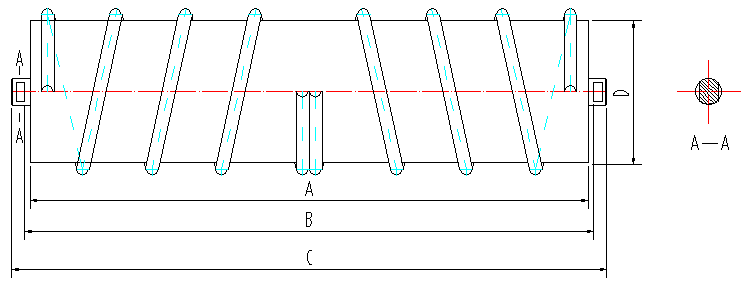 Afrikaans
Afrikaans  Albanian
Albanian  Amharic
Amharic  Arabic
Arabic  Armenian
Armenian  Azerbaijani
Azerbaijani  Basque
Basque  Belarusian
Belarusian  Bengali
Bengali  Bosnian
Bosnian  Bulgarian
Bulgarian  Catalan
Catalan  Cebuano
Cebuano  Corsican
Corsican  Croatian
Croatian  Czech
Czech  Danish
Danish  Dutch
Dutch  English
English  Esperanto
Esperanto  Estonian
Estonian  Finnish
Finnish  French
French  Frisian
Frisian  Galician
Galician  Georgian
Georgian  German
German  Greek
Greek  Gujarati
Gujarati  Haitian Creole
Haitian Creole  hausa
hausa  hawaiian
hawaiian  Hebrew
Hebrew  Hindi
Hindi  Miao
Miao  Hungarian
Hungarian  Icelandic
Icelandic  igbo
igbo  Indonesian
Indonesian  irish
irish  Italian
Italian  Japanese
Japanese  Javanese
Javanese  Kannada
Kannada  kazakh
kazakh  Khmer
Khmer  Rwandese
Rwandese  Korean
Korean  Kurdish
Kurdish  Kyrgyz
Kyrgyz  Lao
Lao  Latin
Latin  Latvian
Latvian  Lithuanian
Lithuanian  Luxembourgish
Luxembourgish  Macedonian
Macedonian  Malgashi
Malgashi  Malay
Malay  Malayalam
Malayalam  Maltese
Maltese  Maori
Maori  Marathi
Marathi  Mongolian
Mongolian  Myanmar
Myanmar  Nepali
Nepali  Norwegian
Norwegian  Norwegian
Norwegian  Occitan
Occitan  Pashto
Pashto  Persian
Persian  Polish
Polish  Portuguese
Portuguese  Punjabi
Punjabi  Romanian
Romanian  Russian
Russian  Samoan
Samoan  Scottish Gaelic
Scottish Gaelic  Serbian
Serbian  Sesotho
Sesotho  Shona
Shona  Sindhi
Sindhi  Sinhala
Sinhala  Slovak
Slovak  Slovenian
Slovenian  Somali
Somali  Spanish
Spanish  Sundanese
Sundanese  Swahili
Swahili  Swedish
Swedish  Tagalog
Tagalog  Tajik
Tajik  Tamil
Tamil  Tatar
Tatar  Telugu
Telugu  Thai
Thai  Turkish
Turkish  Turkmen
Turkmen  Ukrainian
Ukrainian  Urdu
Urdu  Uighur
Uighur  Uzbek
Uzbek  Vietnamese
Vietnamese  Welsh
Welsh  Bantu
Bantu  Yiddish
Yiddish  Yoruba
Yoruba  Zulu
Zulu conveyor roller parts
Understanding Conveyor Roller Parts Essential Components for Efficient Transport Systems
Conveyor systems are the backbone of many industrial operations, providing a reliable means to transport materials across various processes. A pivotal component of these systems is the conveyor roller, which plays a crucial role in ensuring smooth and efficient movement of goods. Understanding the parts of conveyor rollers not only enhances operational efficiency but also aids in maintenance and troubleshooting.
1. Introduction to Conveyor Rollers
Conveyor rollers are cylindrical components that form the basis of many conveyor systems. They are responsible for supporting the conveyor belt and facilitating the movement of materials along the conveyor line. With various designs and specifications available, conveyor rollers can be tailored to meet the demands of specific applications, including heavy-duty transport, lightweight handling, and everything in between.
2. Key Components of Conveyor Rollers
At the core of every conveyor roller lies several essential parts that ensure its functionality and durability
- Steel Tube The main body of the roller is typically made from robust steel or aluminum tubing. This component provides the necessary strength to bear heavy loads while maintaining structural integrity. The thickness of the tube can vary depending on the application, ensuring adequate support for the conveyed materials.
- End Caps These are fitted at either end of the roller and serve multiple purposes. Primarily, they protect the internal components from dust and debris while also ensuring that the rollers do not deform under pressure. End caps can be made from various materials, including plastic or metal, depending on the roller's intended use.
conveyor roller parts

- Bearing Bearings are critical to the functionality of conveyor rollers. They allow the roller to rotate smoothly, minimizing friction and wear on both the roller and the conveyor belt. There are different types of bearings, including sealed bearings, that require little to no maintenance, and open bearings, which may need regular lubrication for optimal performance.
- Shaft The shaft connects the roller to the conveyor frame and allows it to rotate. It is typically made from high-strength steel to withstand heavy loads and impacts. Proper shaft design is crucial, as it affects the overall stability and efficiency of the conveyor system.
- Spacer Often used to maintain the correct distance between rollers, spacers help in aligning the conveyor system accurately and ensuring smooth operation. They can be particularly useful in multi-roller configurations where proper spacing is vital for efficiency.
3. Types of Conveyor Rollers
Conveyor rollers come in various types, each designed for specific applications. Heavy-duty rollers are designed for transporting bulk materials in mining and construction, while light-duty rollers are used in package handling and warehouse settings. There are also specialty rollers, such as those fitted with rubber sleeves for handling delicate items.
4. Conclusion
The importance of conveyor roller parts cannot be overstated. Each component plays a vital role in the overall performance and longevity of conveyor systems. By understanding the intricacies of these parts, businesses can enhance their material handling processes, reduce maintenance costs, and improve operational efficiency. As industries continue to evolve, the demand for efficient conveyor systems and high-quality roller parts will only grow, making it essential for manufacturers to stay ahead of technological advancements. Investing in superior conveyor roller components is a critical step towards achieving optimal productivity and reliability in any industrial operation.
-
Revolutionizing Conveyor Reliability with Advanced Rubber Lagging PulleysNewsJul.22,2025
-
Powering Precision and Durability with Expert Manufacturers of Conveyor ComponentsNewsJul.22,2025
-
Optimizing Conveyor Systems with Advanced Conveyor AccessoriesNewsJul.22,2025
-
Maximize Conveyor Efficiency with Quality Conveyor Idler PulleysNewsJul.22,2025
-
Future-Proof Your Conveyor System with High-Performance Polyurethane RollerNewsJul.22,2025
-
Driving Efficiency Forward with Quality Idlers and RollersNewsJul.22,2025





























